Type City, bar name or keyword...
Everything You Need To Know About Armagnac
Wanna meet your new favourite spirit and step up your cocktail game at the same time? Say hello to Armagnac, the lush French brandy your liquor cabinet’s been missing. Kate Malczewski has your introduction sorted…
BRING ON THE BRANDY
Move over, Scotch and Cognac. When it comes to luxury booze, Armagnac deserves a place of honour in your spirits collection. It’s seriously good juice, perfect for both sipping straight and mixing, and it’s amazing value – meaning you can get top-notch bottles without draining your bank account. Dreamy!
But before we get carried away, let’s chat basics. Armagnac is made by fermenting grape juice into wine, then distilling that wine (which means it’s a brandy). It can only be produced in Gascony, the Armagnac region of France.
If you’re familiar with Cognac, some of this may ring a bell. So what’s the difference between the two spirits? Think of it this way: Cognac is Beyoncé, the world-renowned mainstream mega-star, and Armagnac is Solange, her offbeat, slightly underrated but insanely talented little sister. While Cognac is dominated by big-name brands with large-scale production, Armagnac is home to independent producers making small quantities of unique spirits.
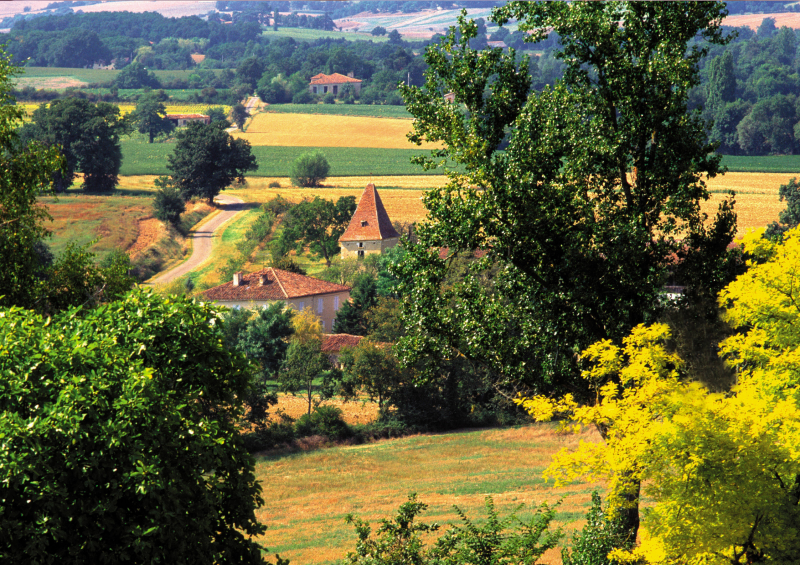
WHAT’S THE BIG DEAL?
To understand what makes Armagnac so special, we have to talk grapes. If you’ve noticed the difference between a light-bodied Pinot Noir and a large-and-in-charge Tempranillo, you already know the impact that grape varieties have on wine. They also play an important role in Armagnac. There are four main grapes used to make Armagnac, and each variety brings unique flavours to the final spirit. Plus, the different soils and climates of Gascony create even more nuances in these grapes and the booze made from ‘em – so one Armagnac may have big flavours of dried figs and raisins, and another might smell like elderflower and taste like apricots. Wild, right?
Then we get to the fun part – distillation. While Cognac is distilled twice, Armagnac is distilled just once, in a special still called an alembic armagnacais. Remember, the more times you distill a liquid, the more impurities (read: flavours) you strip away, so Armagnac’s single distillation means that it holds on to more of its unique character.
Finally, there’s ageing – or not. Both Armagnacs and Cognacs are classified by the number of years they spend ageing in barrels (more on that in a sec). Generally, the longer they age, the more their flavours develop and the more complexity they have. But unlike Cognac, Armagnac can be bottled without ageing – a super-fresh style called Blanche. Yet another thing that adds to its awesome diversity.
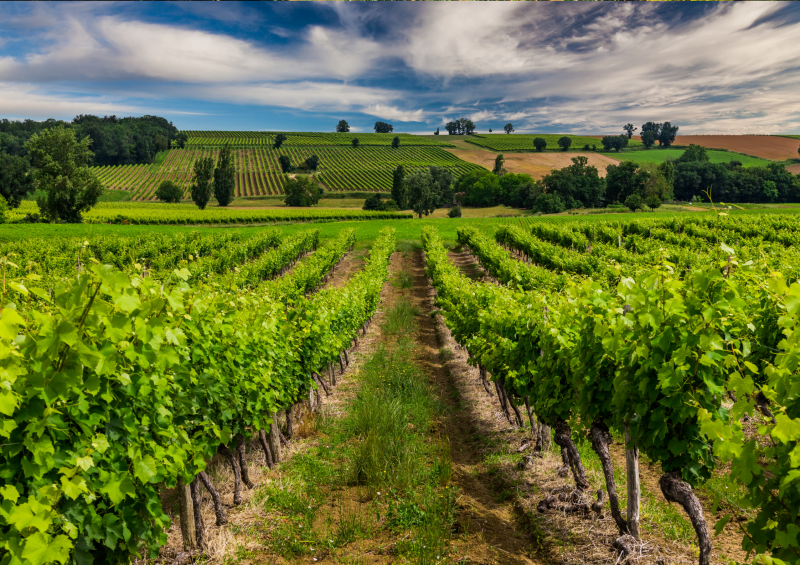
SHAKE IT UP
OK, so we’ve got a spirit that comes in a bunch of different styles and packs major flavour. We think you know what’s coming next. Yep, it’s cocktail time…
To get the rundown on all things Armagnac cocktails, we spoke with Hannah Lanfear, former bartender and current spirits legend who runs The Mixing Class spirits school. Hannah also happens to be a Very Official Armagnac Educator, appointed by the Bureau National Interprofessionnel de l’Armagnac (they’re the people who make the stuff).
“I think Armagnac is an outstanding spirit for cocktails because it's got such depth and complexity to it,” Hannah says. “It's a spirit where you can afford to buy something fantastic and not worry that you've broken the bank to put it in a cocktail, but the money that you spend will get you such a lovely depth of flavour, a distinctiveness and identity.”
To start you off on your Armagnac cocktail adventure, we’ve put together this handy guide to the spirit’s different classifications, the best ways to use each style in cocktails, and our favourite bottles. Let’s get mixing!
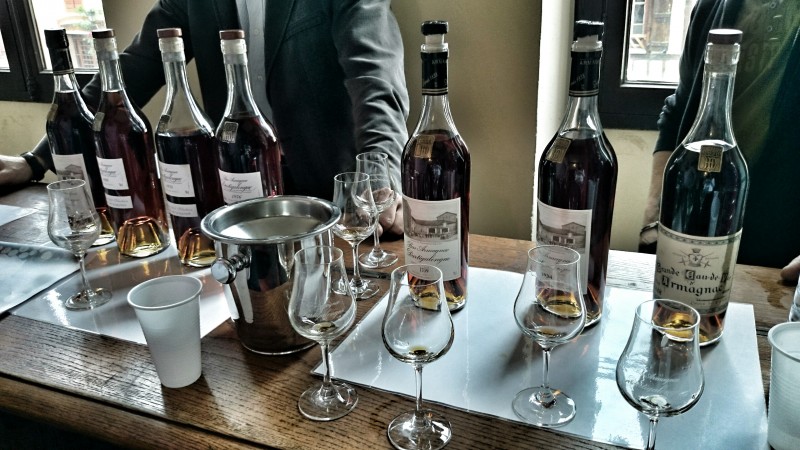
Blanche Armagnac
This clear, unaged spirit is an “industry secret”, Hannah says. “It's such a fantastic, expressive, floral, grapey thing, and it works so well in so many different classics.” That means you don’t need to seek out a cocktail that specifically calls for Blanche Armagnac – just swap it in for another clear spirit like gin or vodka. “You can sub out the gin in a French 75 and make an Armagnac 75, or you can make an Armagnac Martini, which is just delightful. It can be what you want it to be.” And if you’re in the mood for something straightforward yet delicious, may we suggest a Blanche and tonic? You’re welcome.
MAKE THIS COCKTAIL: Blanche Martini
50ml Blanche Armagnac
15ml dry vermouth
Lemon twist, for garnish
Combine the Armagnac and vermouth in a mixing glass with ice and stir. Strain into a chilled glass and garnish with the lemon twist.
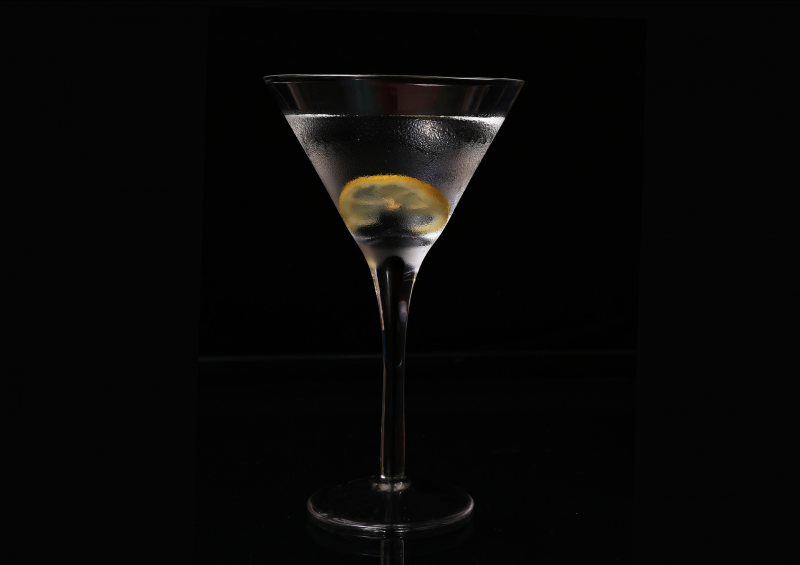
GET THESE BOTTLES:
Château de Laubade Blanche 42%: This is what Blanche Armagnac is all about. It has fresh grapey aromas, it’s a little floral, and in terms of flavour, it’s majorly juicy and vibrant – make your next Martini with this.
42%, chateaudelaubade.com, £35.10 from Amathus Drinks
Blanche de Pellehaut: Love a funky white rum? You’re gonna want to try this one. It has a delicious tropical edge to it – think banana – and some floral notes. Super distinctive and great in a Daiquiri!
44%, pellehaut.com
Also try: DeLord Blanche, Domaine Laguille Blanche, Darroze Blanche, Domaine Tariquet Blanche
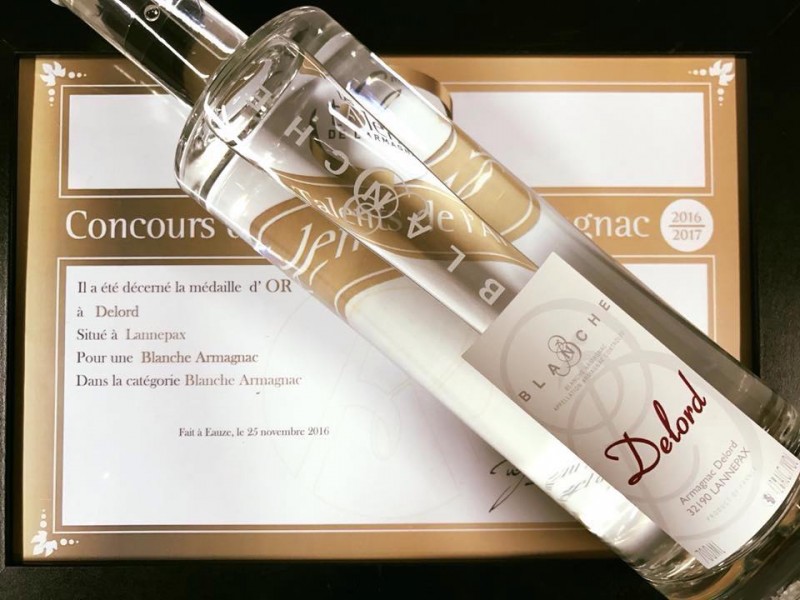
Image source: Armagnac DeLord via Facebook
VS Armagnac
“VS” means “Very Special”, and the liquid lives up to its name. Aged in oak barrels for a minimum of one year, VS Armagnacs are still young and grapey, but they can also have some flavours from the barrel too – notes like baking spices, vanilla, and toffee, plus some drying tannins. Hannah’s recommendation? Keep it simple. “VSs make fantastic drinks with ginger ale. I love the combination of proper ginger ale and spirits, and that subtle oak maturation that you get from a VS and the fruit character of the spirit just work really well with the ginger notes.”
MAKE THIS COCKTAIL: Gascon Mule
40ml VS or VSOP Armagnac
10ml sugar syrup
10ml lime juice
2 dashes Angostura Bitters
40ml ginger beer
Lime wedge, for garnish
Combine all of the liquid ingredients in a glass filled with ice and stir. Garnish with the lime wedge.

GET THESE BOTTLES:
Château de Pellehaut L’Age de Glace VS: On the fresher side, this VS is bright and fruity, with notes of juicy ripe figs. We’d drink it in a highball with soda, and maybe a cheeky splash of fig liqueur.
40%, pellehaut.com, £30 from Drink Finder
Domaine Laguille VS: Aged for three years in oak, this has a touch of toffee and pear along with notes of raisins and dried fruit. We’re mixing it with Campari and sweet vermouth for a rich riff on a Boulevardier and no one can stop us!
45%, laguille.com, £32.50 from The Good Spirits Co
Also try: Château de Lacquy 3 Year Old VS, Château de Laubade Signature VS
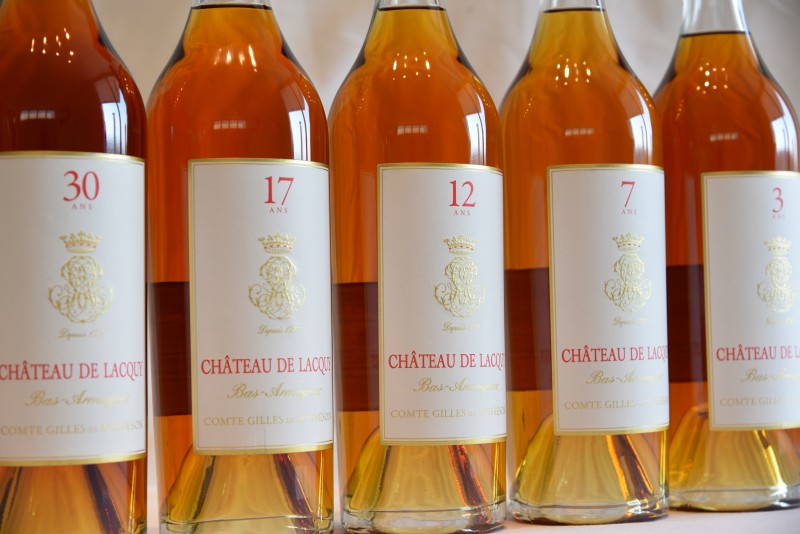
Image source: Château De Lacquy via Facebook
VSOP Armagnac
VSOP Armagnacs (AKA Very Special Old Pale) spend at least four years in oak. Thanks to this longer ageing, they can start to develop some incredible complexity, making them killer in stirred-down boozy bangers like Sidecars and Sazeracs. “You can start getting into more serious cocktail territory,” Hannah explains.
MAKE THIS COCKTAIL: From Tokyo to Paris
30ml VSOP Armagnac
30ml sweet vermouth
5ml Yellow Chartreuse
Orange twist, for garnish
Combine all liquid ingredients in a mixing glass over ice and stir. Strain into a chilled glass and garnish with the orange twist.
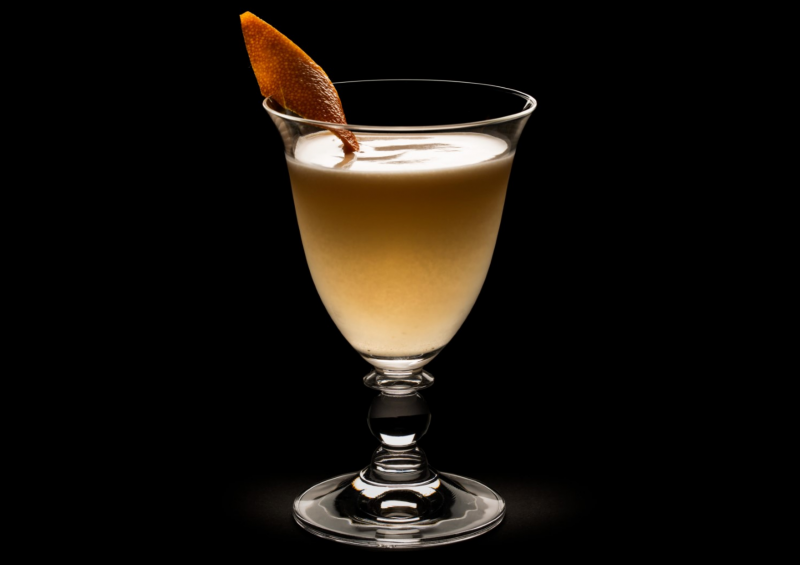
GET THESE BOTTLES:
Domaine Tariquet VSOP: OK y’all, this stuff is the real deal. It’s got notes of baked apples with cinnamon, vanilla, and even fruitcake (the kind that’s actually tasty). At this price, what are you waiting for? You need to get your hands on a bottle.
40%, tariquet.com, £27.50 from Tanners Wines
Château de Lacquy VSOP 7 Year Old: The family that own Château de Lacquy kinda know what they’re doing when it comes to making Armagnac – they’ve been at it for 300 years (!!). No surprise that this one is a beaut. After spending seven years in barrel, it’s starting to show its age in a very good way, with notes of vanilla, raisins, spices, and a nuttiness that makes this perfect for a Japanese Cocktail with orgeat (almond syrup) and bitters.
40.5%, chateaudelacquy.com, £50.45 from Master of Malt
Also try: Domaine d’Esperance 5 Year Old VSOP, Château de Laubade VSOP, DeLord VSOP, Domaine Laguille VSOP
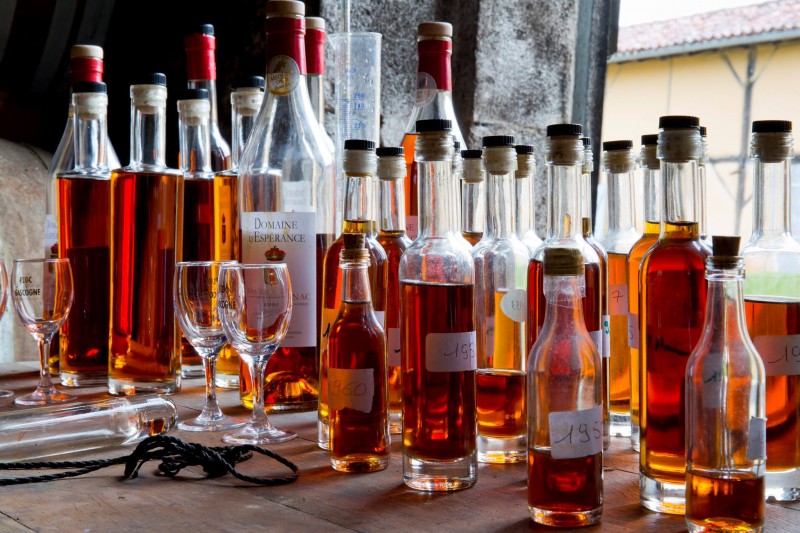
Image source: Domaine d'Espérance via Facebook
XO and beyond
This is the fancy stuff, aged for at least 10 years. While many Armagnacs are great for sipping neat, drinking an XO on its own can be a transcendent experience thanks to all the complexity it’s developed from a decade or more in the barrel. “Once you get to XO, there’s a textural depth and density of flavour that’s quite exciting. Exploring the texture of them is less plausible if you mix,” says Hannah. But she’s well up for giving it a go: “I never say never when mixing things into cocktails.” We reckon a simple Old Fashioned would really let those flavours sing…

GET THESE BOTTLES...
Château de Laubade XO: We know it sounds weird, but hear us out: this XO tastes like furniture polish, and that’s a good thing. In fact, flavours like furniture polish, antique wood, and leather are a signature of well-aged wines and spirits. If you’re not convinced, don’t worry. Here, those flavours are balanced by flavours of candied fruit and Christmas pudding – perfect for sipping straight.
40%, chateaudelaubade.com, £68.70 from Amathus Drinks
DeLord 25 Ans d’Age: Take a sip of this 25-year-old Armagnac and you’re basically tasting pure, unadulterated luxury. It’s deep, dark and luscious, with a whole symphony of flavours: spices, fruitcake, tobacco, furniture polish (there it is again!), candied figs, toasted nuts, and a touch of liquorice. Considering that a Scotch or Cognac of the same age will cost you at least double or triple the price, this is decadence worth snapping up.
40%, armagnacdelord.com, £40.97 from Vintage Wine Gifts
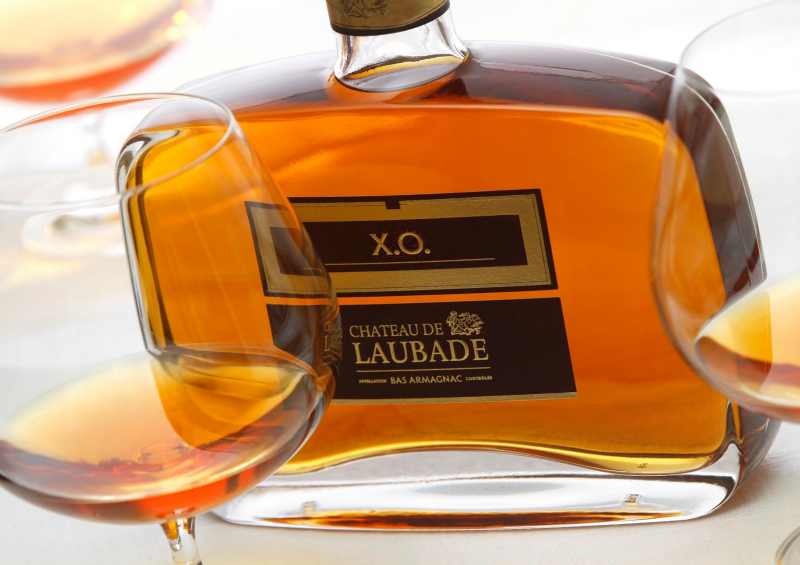
Image source Chateau De Laubade via Facebook / Cover image source Armagnac DeLord via Facebook